Nut free Recipes for Baby Led Weaning & Toddlers
Table of Contents
What do we know about nut-free diets?
Introducing nuts into your child’s diet must be done carefully. There are a few do’s and dont’s! As a general rule of thumb, only use nut butters for children between the ages of 6 months and 5 years and do remember that whole nuts pose a choking risk and should never be given to children under 5 years.
That said, some children go on to develop allergies to nuts and, in some case, the reaction is severe. So, if your child has a nut allergy, I have several recipes that you will want to try!
The Pros and Cons of Nut-Free Diets
Nut-free diets have gained popularity in recent years due to the increasing prevalence of allergies and the need to create safe environments for individuals with nut allergies. While these diets have their advantages, they also come with their fair share of drawbacks. Here, I will explore some of the pros and cons associated with nut-free diets.
Pros:
1. Safety: The most significant advantage of a nut-free diet is the increased safety it provides for individuals with nut allergies. For those who suffer from severe allergies, even trace amounts of nuts can trigger life-threatening reactions. By eliminating nuts from the diet, the risk of accidental exposure and subsequent allergic reactions is significantly reduced.
2. Easier to Navigate Social Situations: Nut-free diets simplify social situations, especially in schools, workplaces, and social gatherings. With the increasing awareness of nut allergies, many institutions have implemented nut-free policies to ensure the safety of individuals who are allergic. By adhering to a nut-free diet, individuals with allergies can confidently participate in these activities without the constant worry of accidental exposure.
3. Promotes Healthier Snacking Habits: Nuts are often high in calories and fats, which makes them a common target for those looking to control their weight or maintain a healthier lifestyle. By eliminating nuts from their diet, individuals are forced to seek alternative snack options that are typically lower in calories and higher in nutritional value. Thus, a nut-free diet can encourage healthier snacking habits.
4. Diverse Food Exploration: Following a nut-free diet can open doors to exploring a wide variety of alternative ingredients and recipes. Many individuals find themselves discovering new foods they would have never tried otherwise. Experimenting with different grains, seeds, and legumes can lead to a more diverse and adventurous culinary experience.
Cons:
1. Potential Nutrient Deficiencies: Nuts are a rich source of essential nutrients such as protein, healthy fats, fiber, vitamins, and minerals. By excluding nuts from the diet, individuals may miss out on these vital nutrients. It becomes crucial for those on a nut-free diet to find suitable alternative sources to ensure they maintain a well-rounded and balanced eating plan.
2. Limited Food Choices: Nuts are a versatile and commonly used ingredient in numerous recipes, ranging from baked goods to savory dishes. Eliminating nuts from the diet may result in a limited number of food choices, especially when dining out or enjoying pre-packaged foods. This can potentially lead to a monotonous diet, reducing the overall enjoyment of meals.
3. Difficulty Meeting Nutritional Requirements: As mentioned earlier, nuts provide essential nutrients that can be challenging to replace through other dietary means alone. Striving to meet nutritional requirements without incorporating nuts can be particularly challenging for vegans and vegetarians who rely on nuts as a primary source of plant-based protein.
4. Cross-Contamination Challenges: While following a nut-free diet at home may seem straightforward, preventing cross-contamination in shared kitchens or dining establishments can be a challenge. Even the tiniest trace of nuts can pose a significant risk for individuals with severe allergies. This can limit dining options when eating out, as there is always a risk of accidental nut exposure due to cross-contamination.
In conclusion, nut-free diets have their pros and cons. They provide a safer environment for individuals with nut allergies, simplify social situations, promote healthier snacking habits, and encourage culinary exploration. However, they may also lead to potential nutrient deficiencies, limited food choices, difficulty meeting nutritional requirements, and challenges related to cross-contamination. As with any dietary decision, it is essential to consider individual needs, consult with a healthcare professional, and make well-informed choices to ensure a balanced and healthy lifestyle.
Nut-Free Breakfasts for Babies and Toddlers: Ensuring a Healthy Start
When it comes to the health and well-being of our little ones, we can never be too cautious. Allergic reactions to nuts can be severe, and in some cases, even life-threatening. Nut-free breakfast options for babies and toddlers, ensures their safety and can promote a healthy start to their day.
First and foremost, nut-free breakfasts provide peace of mind for parents. By offering nut-free options, we create a safe environment, free from the risk of accidental ingestion or exposure. This eliminates worry and enables us to focus on nourishing our children's bodies and minds without constant anxiety.
Nut-free breakfasts promote inclusivity and accommodate diverse dietary needs. We live in a world where food allergies are more common than ever. By offering a variety of nut-free options, we ensure that no child feels left out or restricted due to their dietary restrictions. In doing so, we teach them the values of inclusivity and acceptance from an early age.
Not only are nut-free breakfasts safe and inclusive, but they are also highly nutritious. There is a plethora of delicious alternatives that provide essential nutrients without sacrificing taste. From oatmeal topped with fresh fruits to yogurt parfaits with granola, the options are endless. By exploring these alternatives, we can introduce our children to a variety of flavors and textures, expanding their palates and setting the foundation for a lifetime of healthy eating habits.
Take a look through my breakfast recipes and give them a go!
You have to try my fluffy cottage cheese pumpkin pancakes - a great recipe for this Autumnal season. Make a bigger batch for the whole family to enjoy!
This is a great 3 ingredient millet porridge recipe - ready in 10 minutes. Start the day with a nutritious breakfast that can feed baby from 6 months old.
This is a really easy recipe to whip up in a hurry, perfectly filling! These cottage cheese pancakes do not contain flour which is great for gluten free babies.
This oatmeal mug cake is soft and spongy and great for baby led weaning and little hands. The recipe uses the microwave and can be a fun breakfast or snack.
These banana pancakes are a great addition to the breakfast routine. Using only two ingredients they are a delicious recipe the whole family can enjoy.
A baked oats recipe with no banana or chocolate is a great breakfast option for baby and toddler! You can also make it in advance for those busy mornings!
These are a delicious banana muffins recipe with an added nutritious “secret ingredient”. They are great as a meal on the go for little hands to hold.
This pureed rhubarb fool recipe is an easy make ahead breakfast on the go or yummy dessert for baby, toddler and the adults too! Good intro to a seasonal fruit.
Applesauce fritters are an excellent finger food option for baby-led weaning as they are soft, easily manageable, and packed with flavour. Try for breakfast!
These blackberry oat bars are a great, quick breakfast for baby-led weaning, picky eaters and older kids. Packed with simple ingredients and natural sweetness.
These fluffy pancakes are so quick and easy to make for those busy mornings. They are a great baby-led weaning breakfast or snack.
These Weetabix bites are a great baby-led weaning finger food recipe. With just 2 ingredients they are quick and easy to whip up for a snack or breakfast idea.
These pretty pink beetroot pancakes are great for baby-led weaning and also for those picky eaters. Beetroot provides some natural sweetness and lots of fibre.
The sweet potato pancakes are a great finger food option for baby and toddler. Why not portion and freeze the raw batter and cook when needed to save time?
A great way to add more fruit to your baby or toddler's diet. A fruit smoothie bowl can be made with frozen fruit to give a creamier and thick texture.
An apple porridge recipe that offers a delightful twist with the combination of apple and blackberry, reminiscent of a comforting apple and blackberry crumble.
With only four ingredients and no added sugar, these baked cinnamon pinwheels provide a nutritious option for little hands. A quick snack or breakfast recipe.
A make ahead breakfast idea! Bircher is a Swiss dish that consists of rolled oats soaked in milk or yogurt, mixed with grated fresh fruits, and seeds.
My breakfast Weetabix loaf cake combines the nutritional benefits of Weetabix with the natural sweetness of bananas and berries. Cake for breakfast anyone?!
An easy nutritious porridge recipe suitable from 6 months old that combines quinoa and oats . This porridge is gluten-free, easy to digest and simple to prepare
This healthy buckwheat pancakes recipe, free from added sugar and egg, provides a wholesome and nutritious quick breakfast without compromising on taste.
My apple fritters (similar to an apple pancake) are made with ground oats, grated apple, cinnamon (can be left out), and oat milk, with no added sugar.
Pinwheels can be sweet or savoury, with popular pinwheel fillings such as this easy strawberry cheesecake one! Pinwheels make an eye catching little treat.
The soft and easily mashable texture of fresh bananas makes them ideal for babies practicing self-feeding skills. Try this dipped bananas recipe for a change.
Preparing homemade baked French toast is simple and can be done in batches by doubling the recipe. Leftovers can be stored in the refrigerator or freezer.
Apple Cinnamon Butter Toast! Next level recipe! An easy recipe created with the health-conscious parent and their budding food explorer in mind, this delicious BLW (Baby-Led Weaning) option is bound to satisfy tiny taste buds while keeping added sugars at bay.
An easy baked oats and yogurt recipe, combined with the natural sweetness of bananas and blueberries, is a good one to use for a healthy make-ahead breakfast.
A delicious no sugar French toast recipe that your six month old baby or toddler can enjoy and can be served at lunchtime or breakfast. Perfect finger food!
A twist to the traditional pancake recipe. This sheet pancake recipe is baked and adds the protein of cottage cheese for your weaning baby and toddler!
Nut Free Lunches and Dinners: Fun for Babies and Toddlers!
Are you a parent of a baby or toddler with a nut allergy? Don't worry, creating delightful and nutritious meals without nuts is easier than you may think! With a little creativity and some versatile ingredients, you can ensure that mealtimes for your little one are both safe and enjoyable. Here are some ideas for nut-free lunches and dinners that will make your baby or toddler's taste buds sing!
1. Finger Food Extravaganza:
For a fun and interactive meal, create a spread of colorful finger foods! Offer bite-sized pieces of grilled chicken or tofu, cooked vegetables like carrot sticks or steamed broccoli florets, and slices of avocado or cucumber. You can also include mini sandwiches with fillings such as cream cheese, sliced turkey, or hummus. Encourage your little one to pick and choose, making mealtime an adventure!
2. Pasta Party:
Who doesn't love pasta? Prepare a delicious nut-free pasta dish by tossing cooked noodles with a homemade tomato or vegetable-based sauce. Sneak in some extra nutrition by adding finely chopped spinach, zucchini, or bell peppers to the sauce. Top it off with a sprinkle of grated cheese, and you'll have a meal that is both delicious and wholesome.
3. Tasty Stir-Fries:
Stir-fries are another excellent option for nut-free meals. Sauté your toddler's favorite vegetables, such as snap peas, bell peppers, and mushrooms, with some protein like diced chicken or shrimp. You can use a variety of sauces, such as soy sauce or teriyaki, to add flavor. Serve it over a bed of rice or noodles for a complete and satisfying meal.
4. Mini Quiches:
Quiches are not only delicious, but they can also be made without nuts. Whip up a batch of mini quiches using a base of eggs and milk. You can add a variety of fillings like chopped cooked ham, spinach, or mushrooms. Bake them in individual muffin tins for easy portion control. These little treats can be served warm or chilled, making them perfect for lunch or dinner.
5. Baked Sweet Potato "Fries":
Who says fries have to be made from potatoes? Create a nutritious and tasty alternative by making baked sweet potato "fries" for your little one. Slice sweet potatoes into long, finger-like shapes, coat them with a light drizzle of olive oil, and sprinkle with a pinch of salt and a dash of cinnamon. Roast them in the oven until crispy, and watch your baby or toddler gobble them up with delight.
Remember, when cooking for babies and toddlers with nut allergies, it's important to double-check all ingredient labels to ensure that the food is safe. Additionally, consult with your pediatrician or an allergist if you have any concerns.
Nut-free meals can be just as exciting and flavourful as any other. Get creative, experiment with different ingredients and flavours, and most importantly, have fun in the kitchen as you provide your little one with safe and delicious meals! Why not give one of my lunch or dinner recipes a go?
This is a delicious sweet potato pizza base that uses just a handful of store cupboard ingredients. A great recipe for baby-led weaning and older kids too.
My parsnip puree recipe is a great option for babies and toddlers. You can customise by adding different fruit and veggies to make a yummy meal for baby.
This is a really easy cheesy, cheese sauce to make for baby and the whole family too! You can also easily make the recipe dairy free with a few swaps.
A yummy homemade breadstick recipe that is perfect for baby and toddler. Soft and doughy, they can be used for dipping and great for picnics and lunch boxes.
This is a great little idea if you are hosting a baby shower. The deviled eggs can be made in advance and are suitable for adults and babies from 6 months old.
This is a great 2-ingredient for a Greek yogurt flatbread recipe - can be made in a flash. They are a great alternative to bread and can be dipped and wrapped.
This really is an easy bread recipe - great if you want to have a try at making your own bread only using two ingredients - just bread flour and yogurt.
This pizza croissant roll stuffed with cheese recipe is a quick and fun idea, perhaps for an after school snack or as part of a main meal at dinner time.
This is actually a vegan kidney bean curry recipe is perfect for baby, toddler and the whole family too. A great plant based/dairy free dinner or lunch.
This lentil patty recipe is a great way to serve soft, easy to digest lentils to baby for baby-led weaning. A great finger food option for baby and toddler.
This courgette puree recipe produces a great smooth puree that can be added alongside finger foods for dipping. Excellent for younger babies starting weaning.
This is a yummy sweetcorn fritter recipe - great for baby and toddler. An appealing recipe packed full of flavour and texture and ideal for a lunch or snack.
This is an easy to prepare and cook lentil soup for a baby-led weaning lunch or dinner recipe. A great nutritious complete meal for the whole family too.
If you are looking to introduce chicken to your baby for the first time, try this yummy chicken drumstick recipe. Great for older babies and toddlers too!
This is a quick and easy baked avocado and banana baby-led weaning recipe for baby and toddler! Great for on the go weaning and the perfect finger food!
Simple crudites with a dip is a great veggie recipe for baby, toddler and the whole family. Requires minimal preparation and cooking time with fave veggies!
This is a great four ingredient tater tot recipe great as a finger food for baby or a yummy side for chicken nuggets or fish fingers. Baked not fried!
These sweet potato fritters are a great finger food for baby led weaning and toddlers. Soft and easy to chew with no added salt. Great as a snack or as a lunch.
A sweet potato mash recipe for all the family to enjoy. Its soft texture and naturally sweet flavour, which makes it especially appealing to little taste buds!
Try my easy cheesy broccoli pasta recipe for a great mid-week meal - any pasta shape will do! Double or triple the ingredients for the whole family to enjoy.
This Greek yogurt pizza base is a great recipe for baby and toddler. With only 2 ingredients for the pizza dough it's a simple recipe for lunch or dinner.
A great way to add in extra flavour to a mac and cheese recipe using vegetables. Quick and easy to make - add in a veggie they may not have tried yet!
This eggs-on-a-sheet-pan is an easy recipe for baby-led weaning breakfast, lunch or dinner. Great also for batch cooking and store in the fridge or freezer.
This pork mince shepherd's pie is an ultimate comfort food recipe great for baby-led weaning and for the whole family too. Apple is added for some sweetness.
A yummy carrot soup recipe for baby, toddler and older kids too - a great mid week meal. Carrots are naturally sweet and packed with vitamins and minerals.
This broccoli fritter is a great recipe for trying a broccoli finger food for the first time. It makes a speedy lunch and they are great for batch cooking too.
A cheese and bean toastie can be a great mid-week meal idea for baby and toddler. Use gluten-free bread and/or vegan cheese if you prefer these options.
This chicken tikka lasagne is a delightful twist on the classic lasagne dish, swapping out the pasta for tortilla. Great portion size for baby led weaning.
This delicious one pot cheeseburger bowl pasta recipe combines mince beef with finely chopped vegetables and a sprinkle of cheese - great for the whole family!
A quick lamb mince pasta recipe that is suitable for the whole family from 6 months old. Lamb is a good source of protein, iron, and essential nutrients.
A cheese and ham croissant is so delicious and this recipe uses bread to look like a croissant! A fun lunch idea, ideal if you like a cheese and ham sandwich!
A quick and easy, fresh tasting lunch! Easy bento box idea for all the family using giant cous cous and Cheddar cheese! This makes one substantial bento box.
A fun way to serve pastry! The cheese puffs are so moreish and perfect served on their own, or if you prefer, serve with favourite fruit or veggies. Yum!
Try this easy delicious egg salad lunch on-the-go that can be made ahead for your baby and toddler! Add some green beans to the egg salad and serve with toast.
A very easy bento box, inspiration taken from an old classic - coronation chicken - packed full of flavour for a lunch that can be enjoyed by all the family!
If you’re looking for an easy fun eggy slice based lunch recipe for your toddler, this one will be a hit! Serve with your little one's favourite side dishes.
A fun, picky mozarello and tomato bento box lunch for you and your little ones! Full of flavour to waken those taste buds! This recipe makes 6 pastries.
This houmous roll bento box is a tasty sandwich lunch and visually appealing that will be a favourite with your little ones! Houmous used as a sandwich spread.
A delicious lunch for your little one! All the elements of their favourites with a twist on traditional pizza but in a bento box! Add in some fresh fruit.
A fun Easter bunny bento box recipe for your little one! Packs a punch with vitamins and minerals, all in a sandwich lunch! Quick, convenient and simple too!
A perfect finger food lunch recipe for your little ones! Make lunch time fun with this delicious pasta shell bento box! Serve large filled pasta shells as snack.
A delicious potato salad bento box that can be enjoyed by all the family! New potatoes, kidney beans, green beans and spring onion - packed with veggies!
A tasty egg roll bento box idea for lunch or snack that’s so nutritious and easy to make for your baby or toddler. Prepare in advance and keep in the fridge.
A tasty chicken nacho bento box lunch recipe idea that will be a fun treat for your little one! A protein rich lunch that can be dipped into for lunch!
Bento Box ideas: This grilled cheese bento box with pineapple is a fun lunch for your little one! Best eaten cooled from the pan, but also great in a lunch box.
Delicious bento box idea! Full of goodness! This green machine pancake bento box includes spinach pancakes, spirulina yogurt and kiwi. Give them a go!
A yummy plant-based black bean taco bento box lunch recipe using black beans and avocado that can be dipped, wrapped or rolled full of protein and yumminess!
Love is in the air! A Bento Box for Valentine’s day! I had fun creating this recipe especially for my little boy. Delicious yummy treats inside!
Creating Delicious Nut-Free Snacks and Desserts for Babies and Toddlers
As parents, we are always looking for nutritious and delicious options to satisfy our little ones' taste buds while keeping them safe. For parents who face the challenge of nut allergies, it can be especially tricky to find snacks and desserts that are both nut-free and appealing to babies and toddlers. Fortunately, with a little creativity and the right ingredients, it is possible to create tasty treats that are both allergy-friendly and enjoyable for little ones.
When it comes to nut-free snacks, one option is to substitute nuts with seeds, such as sunflower or pumpkin seeds. These seeds pack a nutritional punch and can be used in a variety of ways. Consider making homemade seed bars by combining seeds, oats, dried fruit, and a sweetener like honey or maple syrup. Press the mixture into a pan and let it set in the refrigerator before cutting into bite-sized bars. Another idea is to make seed butter, which can be used as a spread or dip. Simply blend the seeds with a little oil and sweetener until smooth, and voila! You have a delicious and nut-free alternative to traditional nut butters.
For nut-free desserts, fruits are an excellent option. Pureed or mashed fruits can be used to naturally sweeten desserts like smoothies, puddings, and fruit-based popsicles. Consider making a creamy avocado and banana pudding or a refreshing watermelon slushie. You could also transform fruits into frozen yogurt bites by blending them with Greek yogurt and freezing the mixture into bite-sized portions. These treats are not only nut-free, but they also provide essential vitamins and minerals for growing little ones.
Incorporating whole grains like oats or quinoa into snacks and desserts is another great way to add texture and nutrition. Try making energy balls by combining rolled oats, dried fruit, honey, and shredded coconut. Roll the mixture into bite-sized balls and refrigerate until firm. Or, you can make a simple quinoa pudding by cooking quinoa in milk, adding a sweetener of choice, and topping it with fresh berries or pureed fruits.
When making nut-free snacks and desserts for babies and toddlers, it's important to always read food labels carefully and avoid any products that may contain traces of nuts. Additionally, consult a healthcare professional if you have concerns about your child's specific dietary needs or restrictions.
With a bit of creativity and a focus on wholesome ingredients, creating delicious nut-free snacks and desserts for babies and toddlers is not only achievable but also an opportunity to introduce young palates to new flavours and textures. Here are my recipes for snacks and desserts!
These strawberries and cream lollies are great for teething gums. With only two ingredients they are really easy and quick to make too. Homemade are the best!
This is a great way to use apple puree for baby-led weaning. The soft pastry and sweet apple puree is a great combination and a treat for the entire family.
This is a simple applesauce recipe to whip up in no time. It can be a great base for so many recipes such as a apple crumble or served on its own with yogurt.
These delicious strawberries and cream cookies are easy to prepare. They have a soft texture when baked. Perfect for lunch boxes and after school snacks.
This baked pears recipe is great for baby led weaning. Naturally soft and sweet when baked, they make a yummy snack or breakfast item. The cinnamon adds warmth.
These strawberry muffins baked with yogurt are so yummy and naturally sweet - so no added sugar! Just sweetened with fresh strawberries and plain yogurt.
My easy apple flapjacks is a great recipe for baby-led weaning. No added sugar just sweetened with apple puree and Greek yogurt. Great for older kids too.
Mmm, strawberries and cream! This is my fun take on the viral strawberries and cream sandwich slice. A tasty sweet treat for the whole family to enjoy!
A very simple ‘how to’ serve cucumber to baby during the baby led weaning journey, served with a yogurt dipping sauce and optionally, some flaxseed for texture.
This is a simple applesauce muffin recipe that is gluten-free and makes a soft texture treat for babies. A tasty recipe for snack time or breakfast time.
This is a great recipe for teething gums or it can be a great option for a sweet treat for snack time
This is an easy sugar free ice lolly recipe for those hot summer days or just for a nice, cooling treat! Suitable for baby-led weaning and for older kids too.
This is a really easy three ingredient vegan flapjack recipe for baby-led weaning and toddlers. Uses plain vegan Greek yogurt instead of butter or eggs.
These carrot and courgette muffins are great for baby-led weaning and toddler. They have no added egg and are really easy to make dairy free and vegan.
These blackberry oat bars are a great, quick breakfast for baby-led weaning, picky eaters and older kids. Packed with simple ingredients and natural sweetness.
These are a great no added sugar apple muffin recipe, great for snack time or a breakfast on the go! Soft, moist texture for little ones to also enjoy!
This is a great no added sugar recipe for baby and toddler. These easy banana muffins can be used for breakfast on the go or as a tasty afternoon snack.
School French toast sticks are an excellent snack idea for baby-led weaning and toddlers using store cupboard ingredients. Great for school lunchboxes too!
These are the best homemade cheesy puffs, a great alternative to store-bought alternatives. Almost melt in the mouth, so a good choice for baby led weaning.
Try my delicious lemon raspberry bars recipe. Filled with gluten free oats they are great for a snack, as a lunchbox idea or a finger food option for your baby.
Try this baby-led weaning recipe. Packed with protein and mashed berries, these cottage cheese fruit cups are a great snack or dessert for baby and toddler.
This is a great recipe for baby-led weaning. Perfect for teething gums. A great recipe for the entire family too if you make them into a bigger ice lolly.
My simple baked apple slices recipe is a great one for baby led weaning, the perfect finger food for little hands to hold. A great introduction to apples too.
These oats and apple cookies are an excellent choice for baby-led weaning and are made with no added sugar. Good for a snack or finger food breakfast option.
Try out my bread and butter pudding - it's a great nutritious, soft-textured dessert for baby led weaning and kids. Perfect for those kids with a sweet tooth.
An easy healthy breakfast or afternoon snack idea for baby and toddler. These berry and oat muffins are made with banana for natural sweetness (no added sugar).
This is a great no bake cheesecake recipe that uses just 3 ingredients, perfect for baby led weaning and toddlers. A delicious gluten-free recipe too.
A yummy cake-like ricotta cheese cookie recipe that are perfect for snacking or for the lunch box. Try serving with Greek yogurt or berries as a dessert.
A great banana and pumpkin muffin recipe if you like the pumpkin spice flavours. No added sugar and simple ingredients making them perfect for baby led weaning.
A delicious aubergine dip for your little one at lunch or snack time! A versatile recipe you can serve as a dip, spread in a sandwich, or use in a wrap.



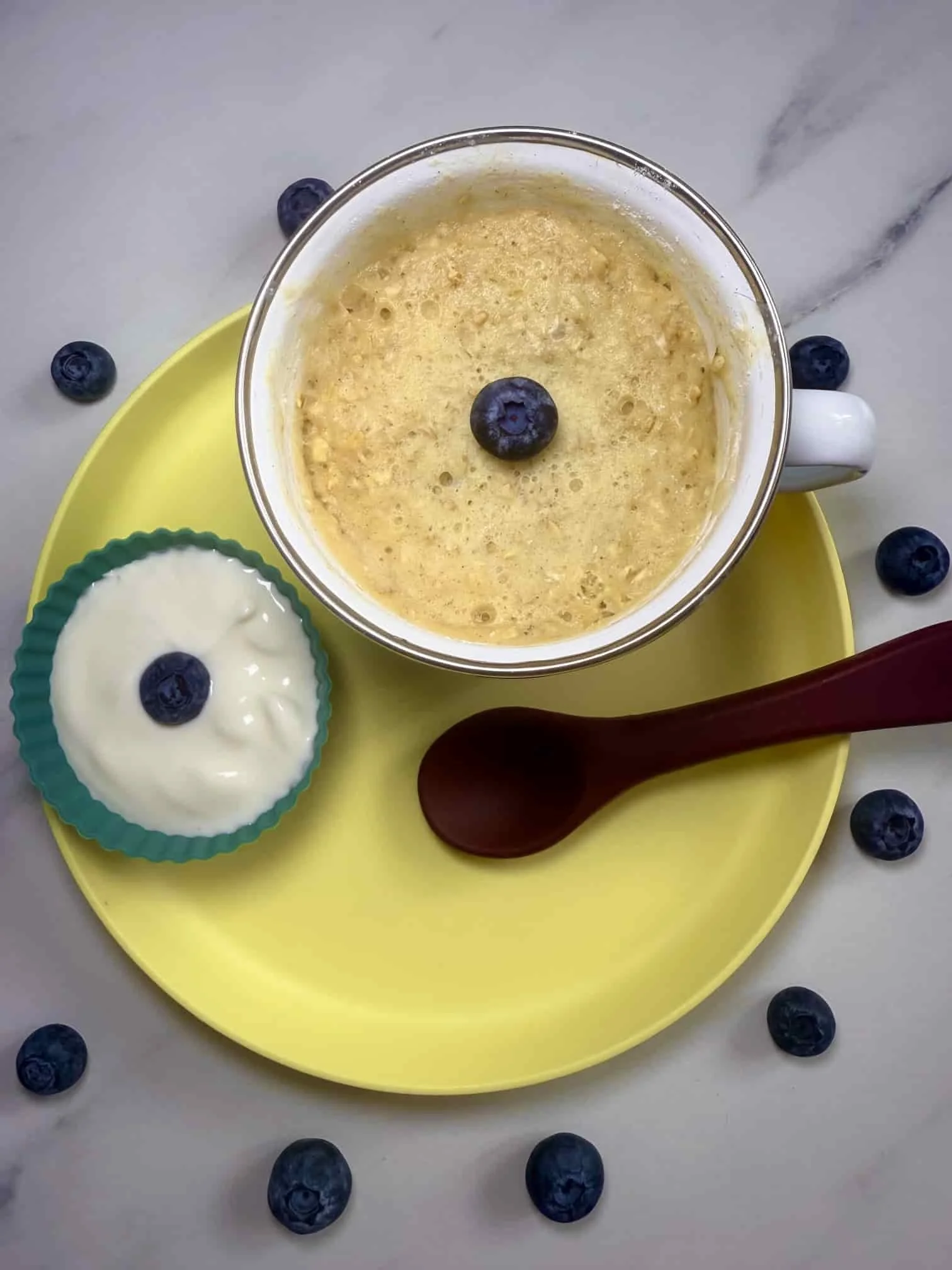
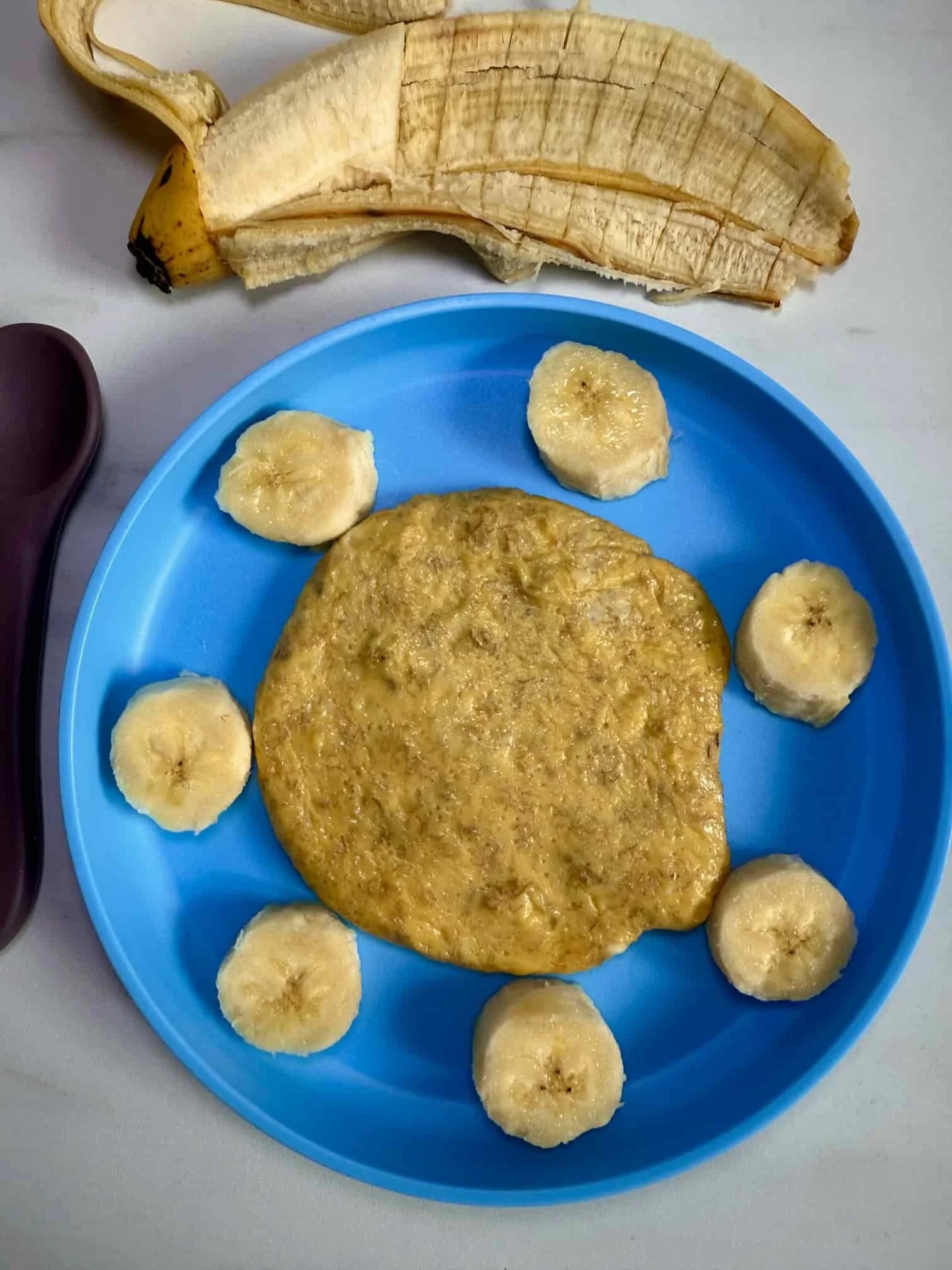










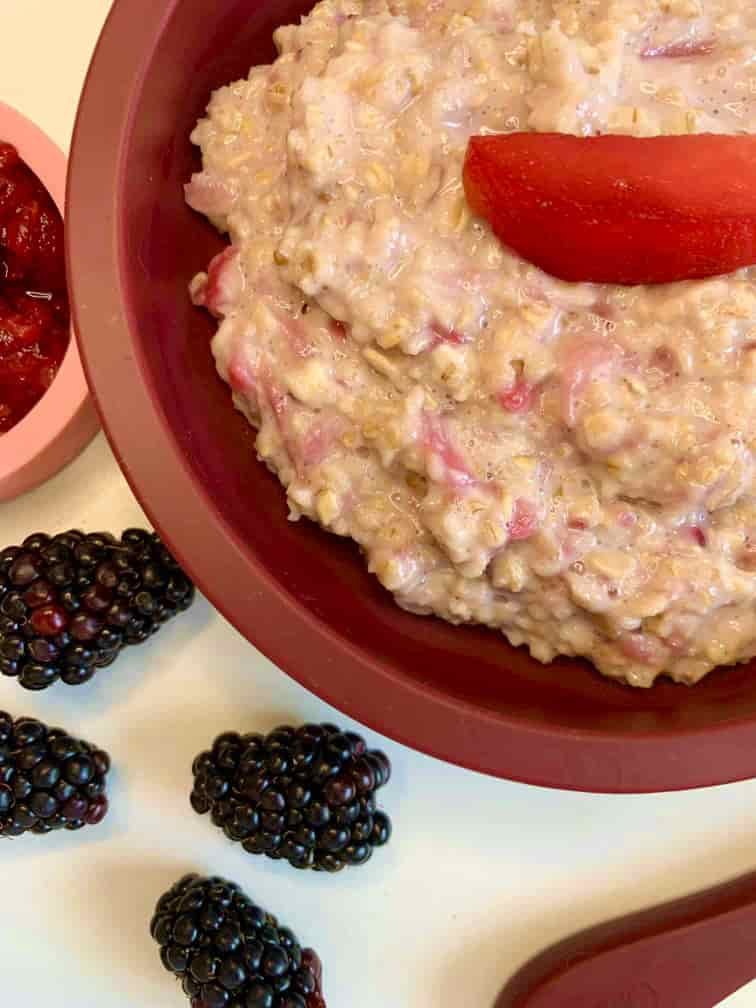














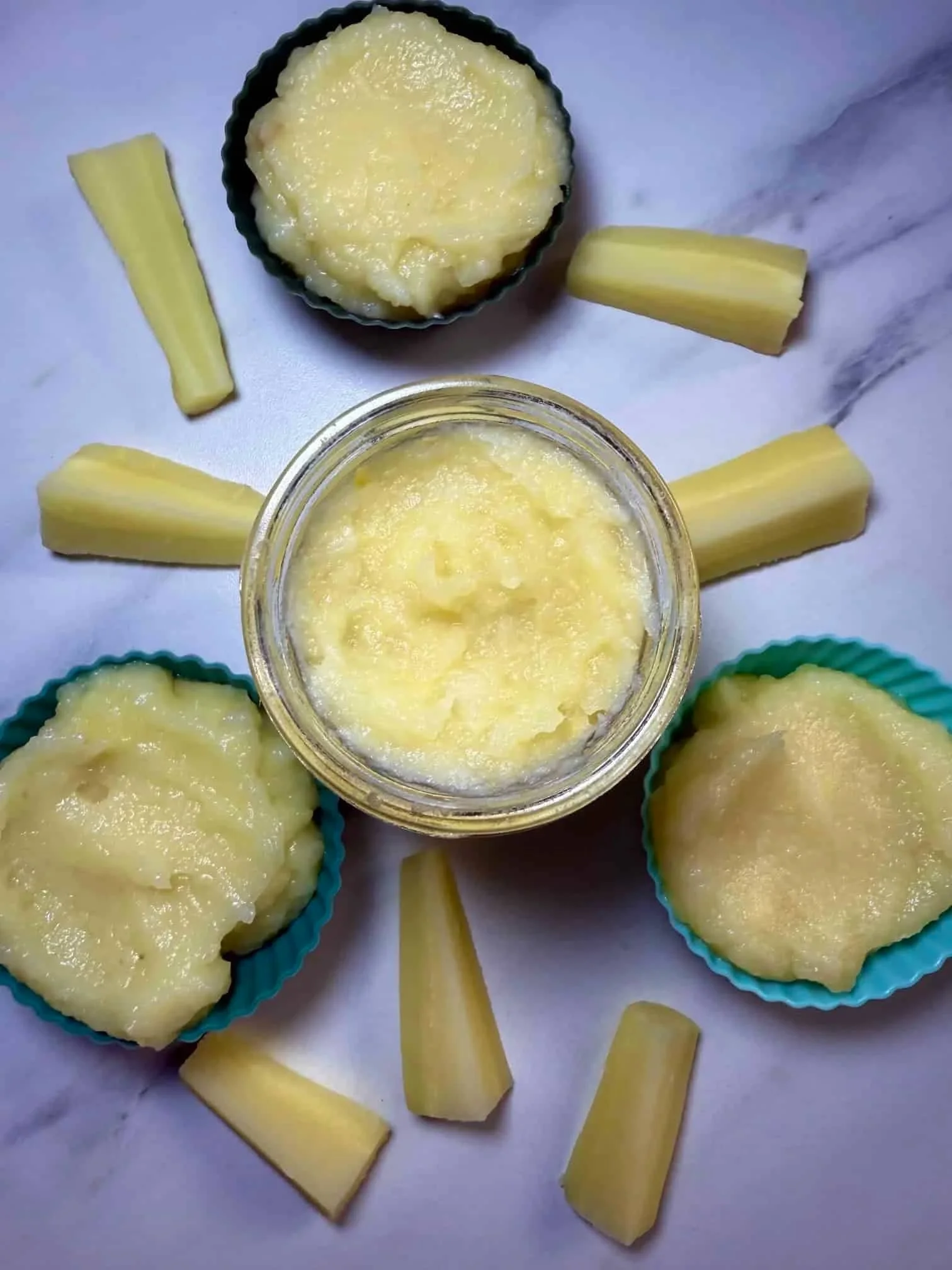

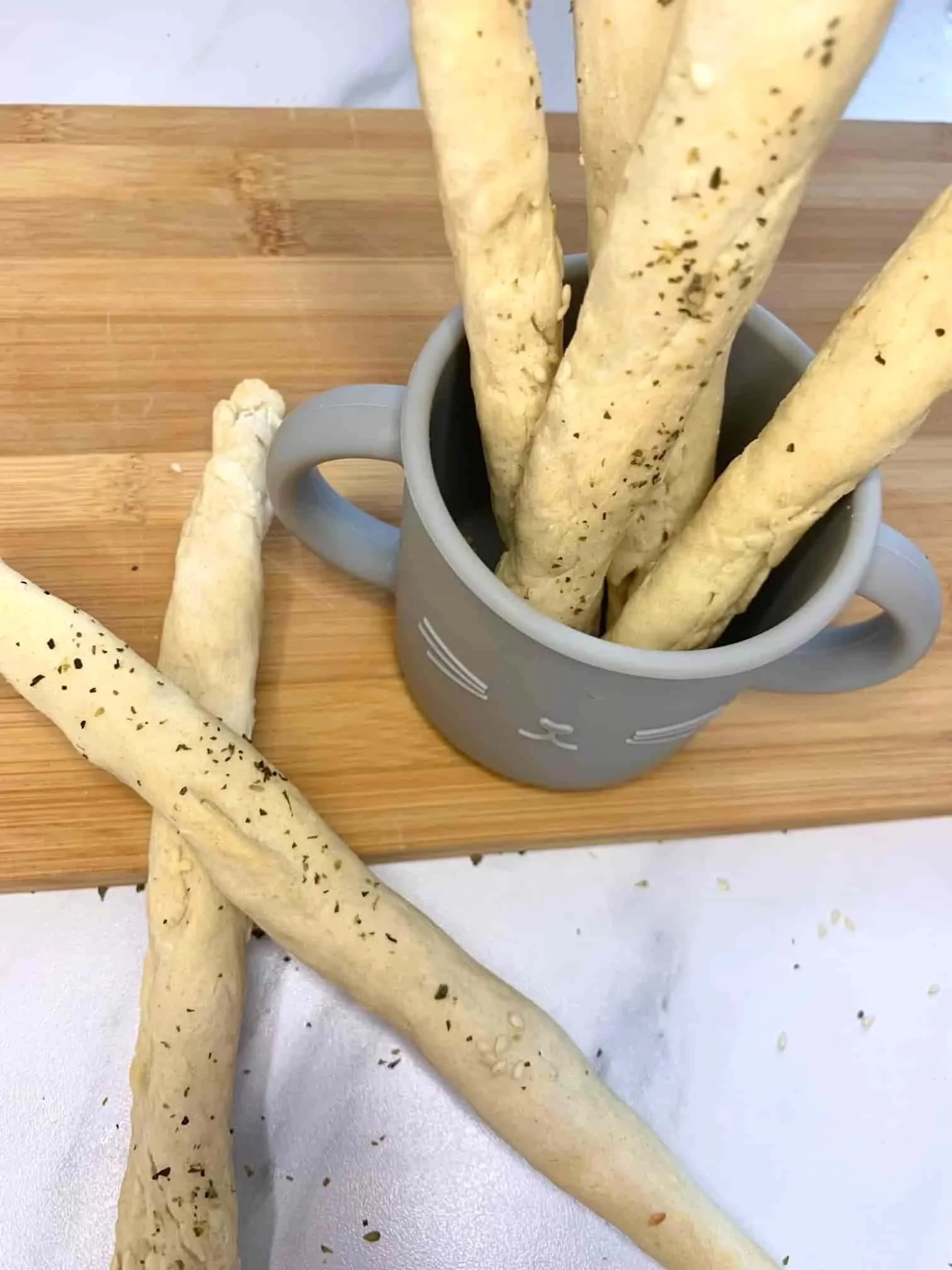
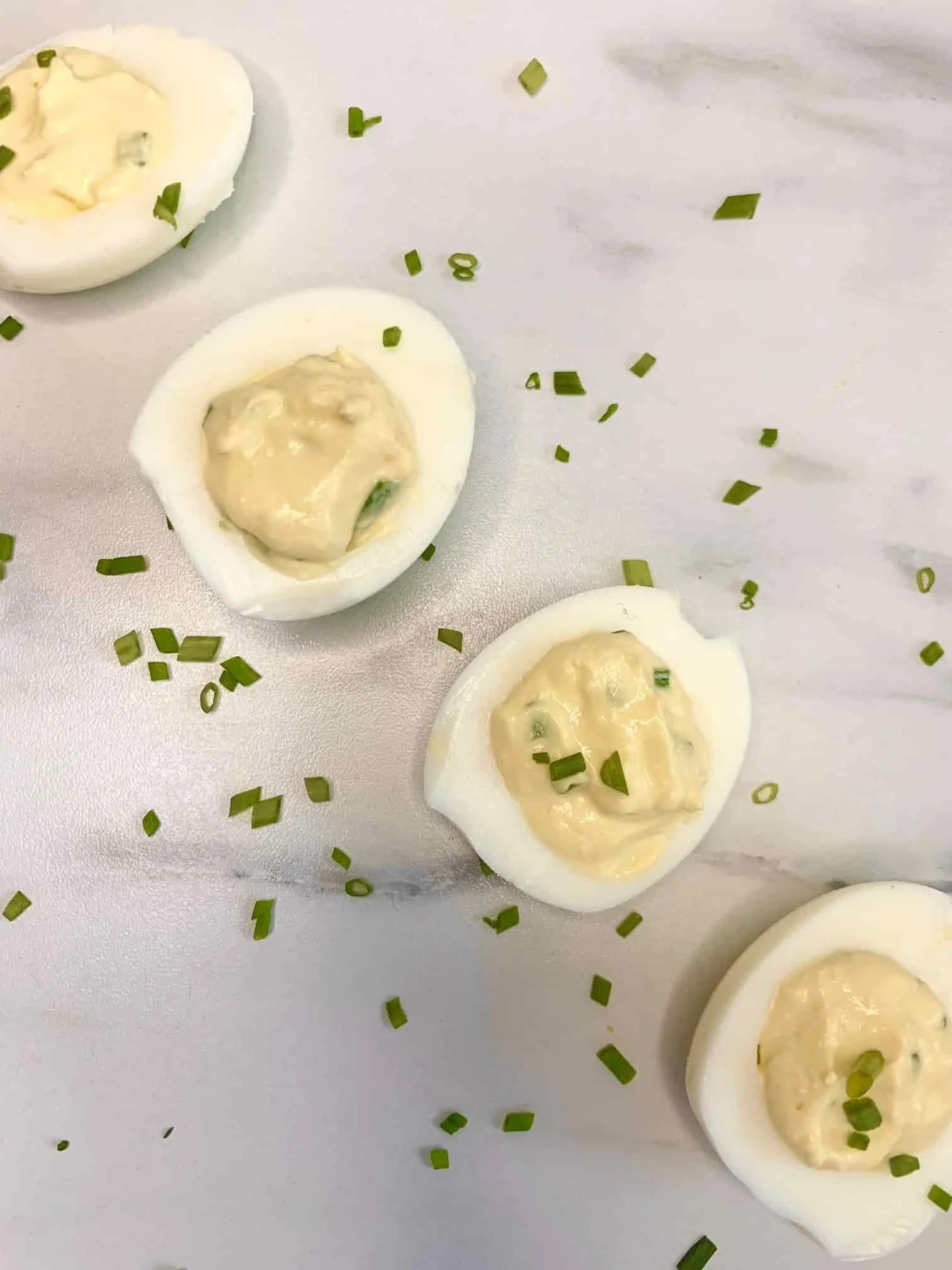





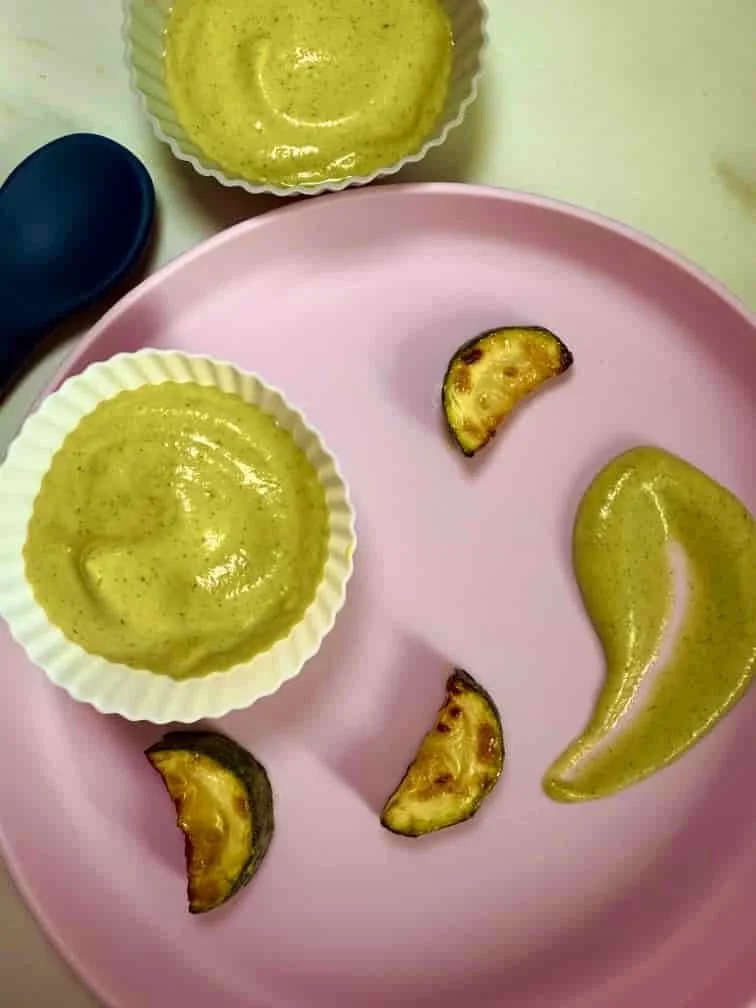

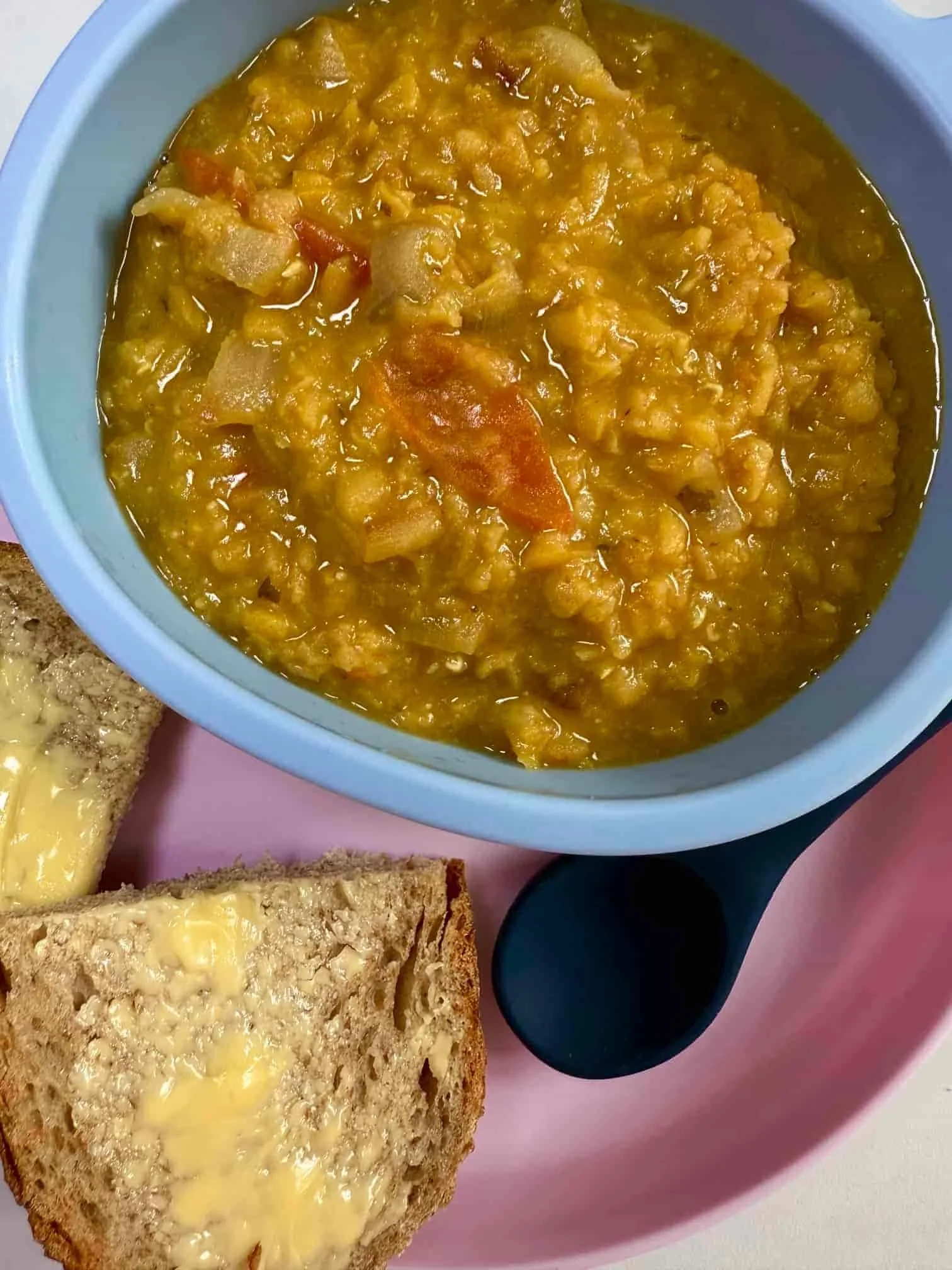



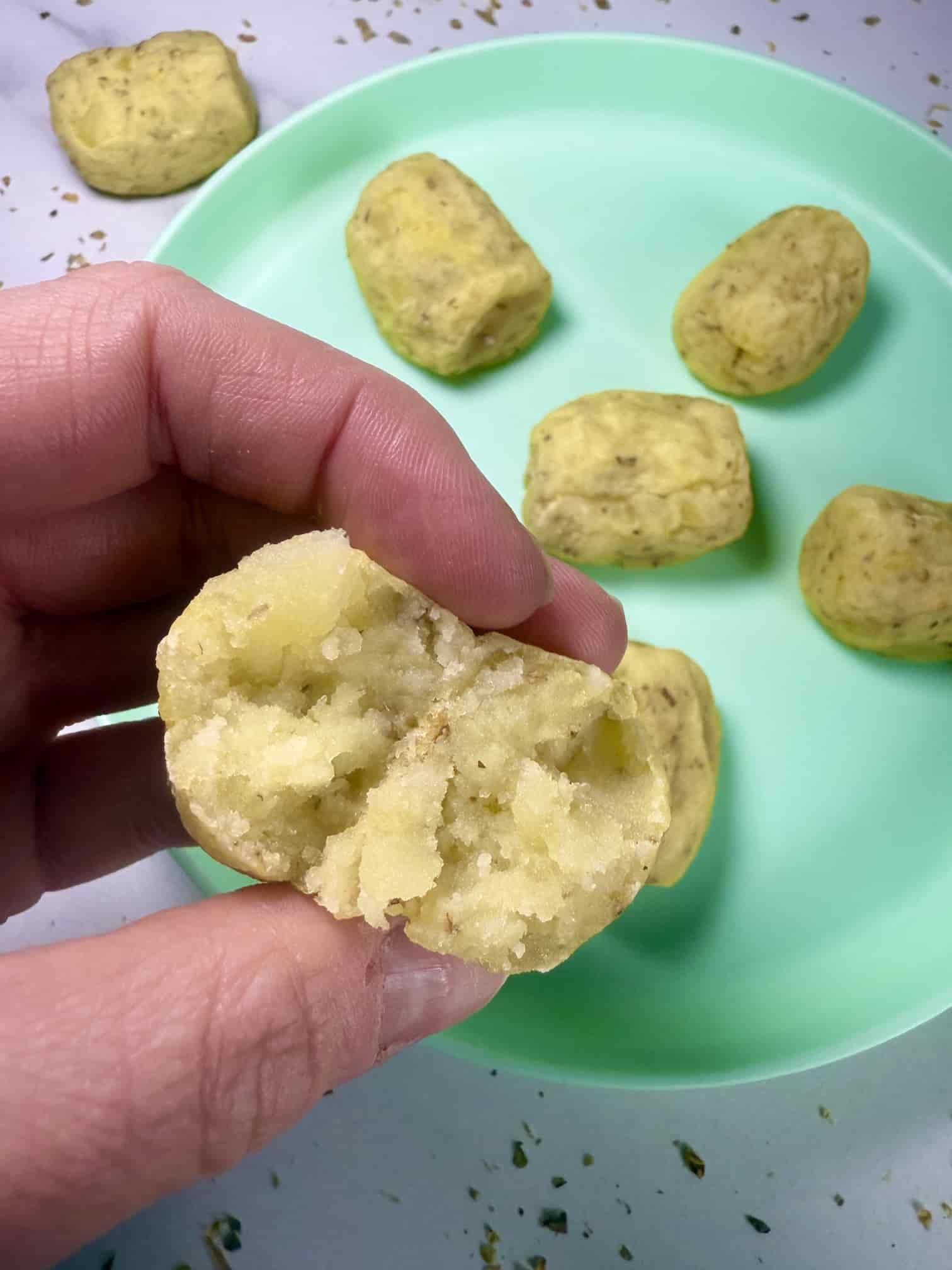




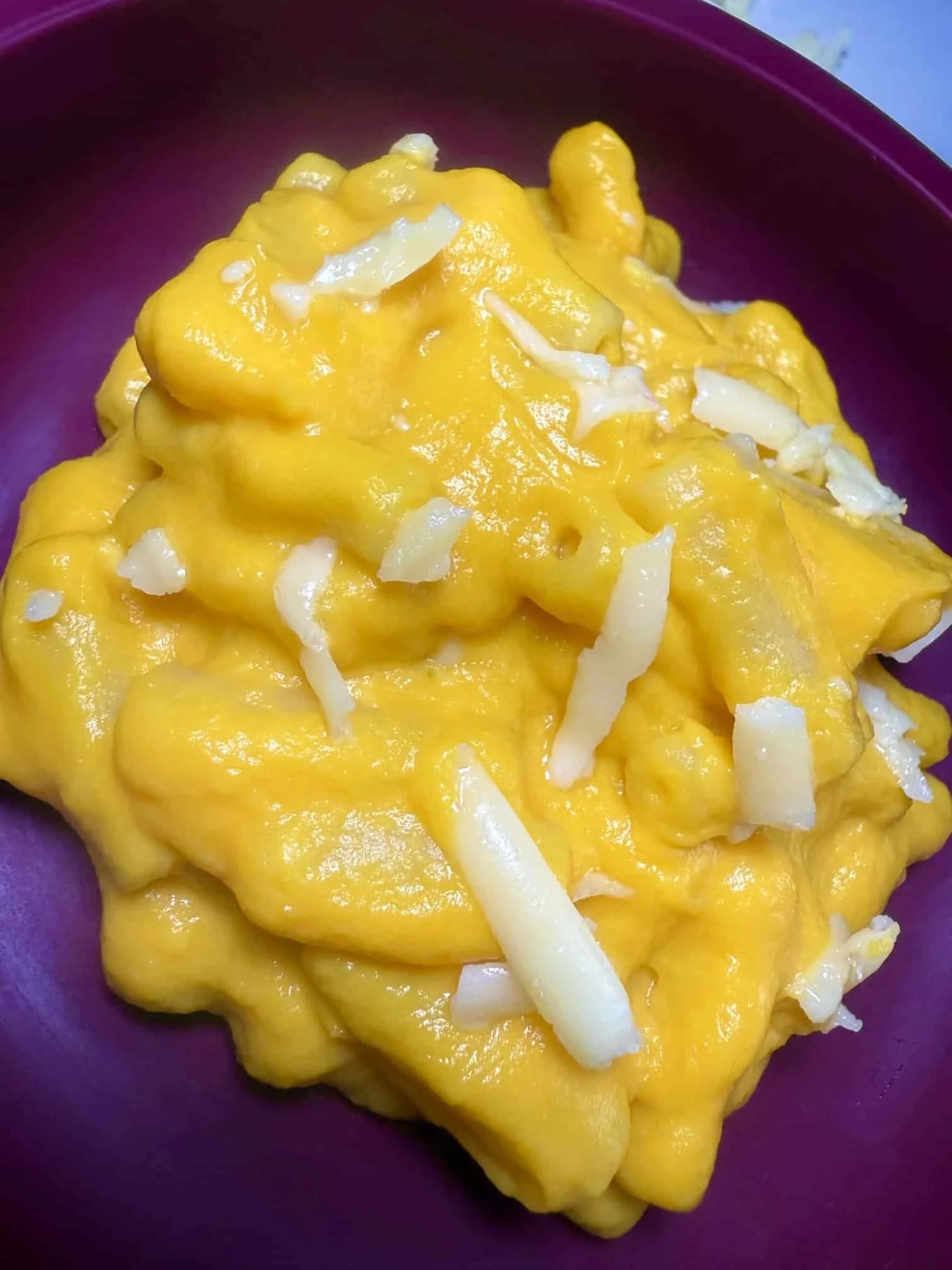
















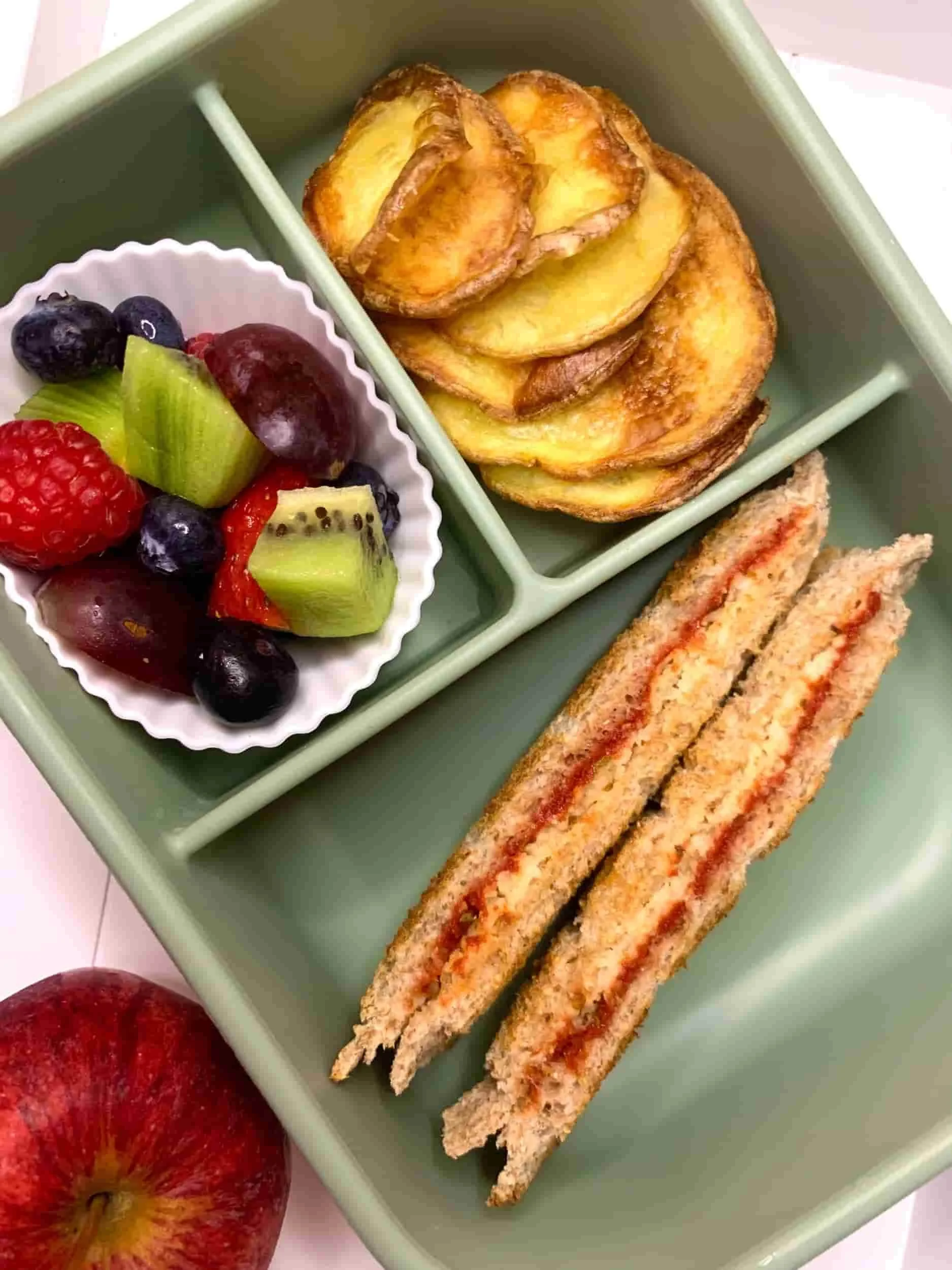
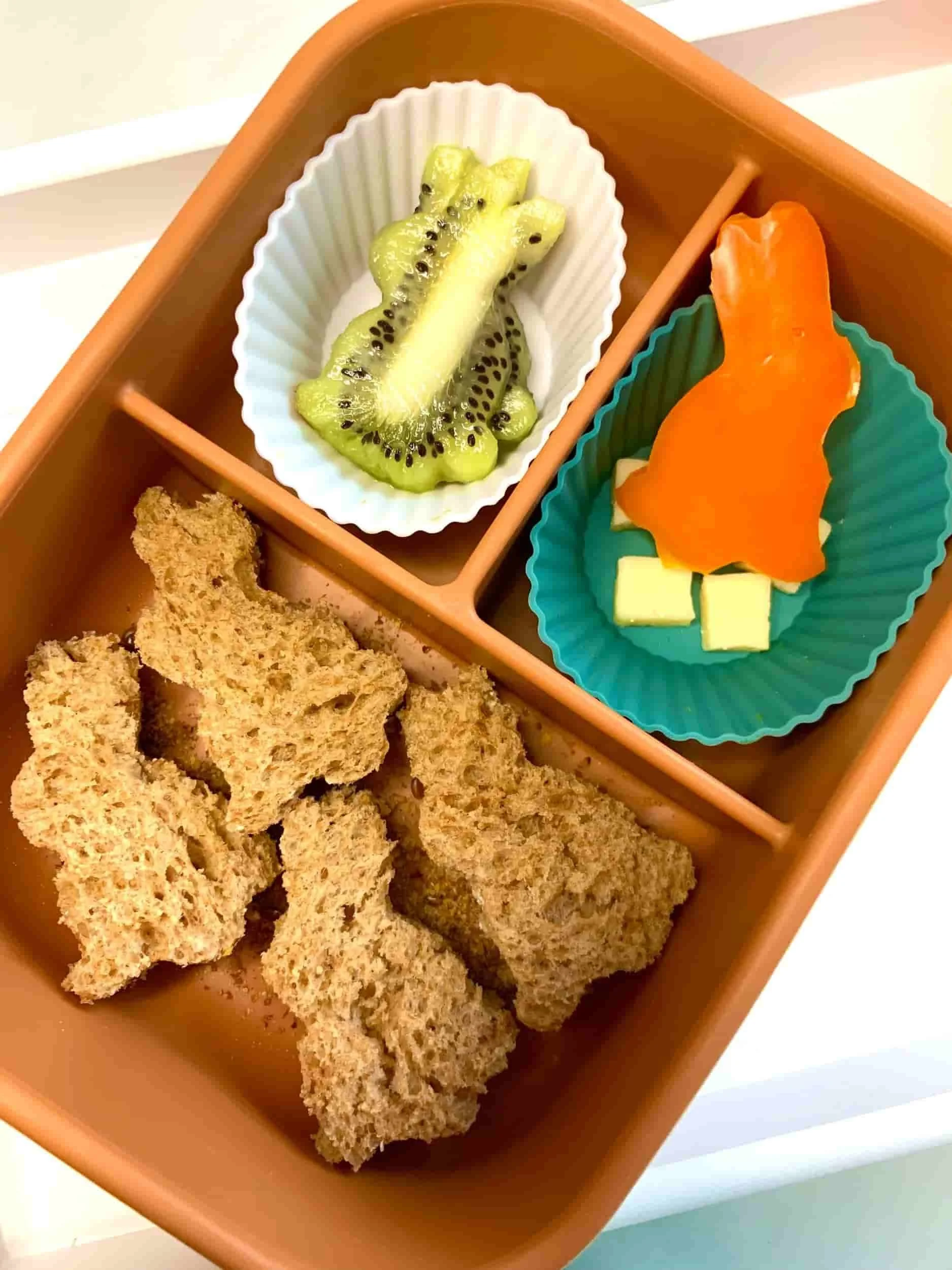
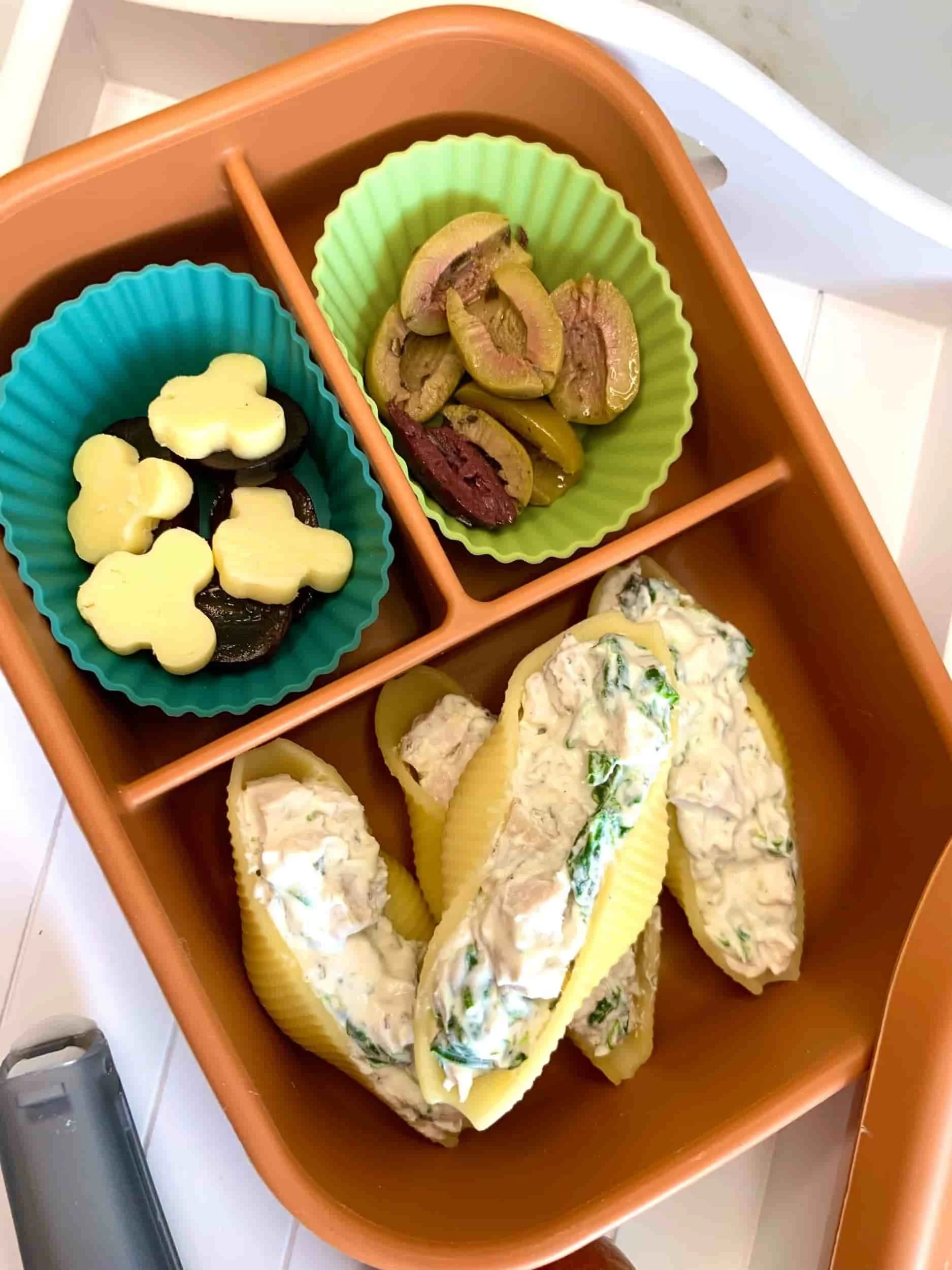


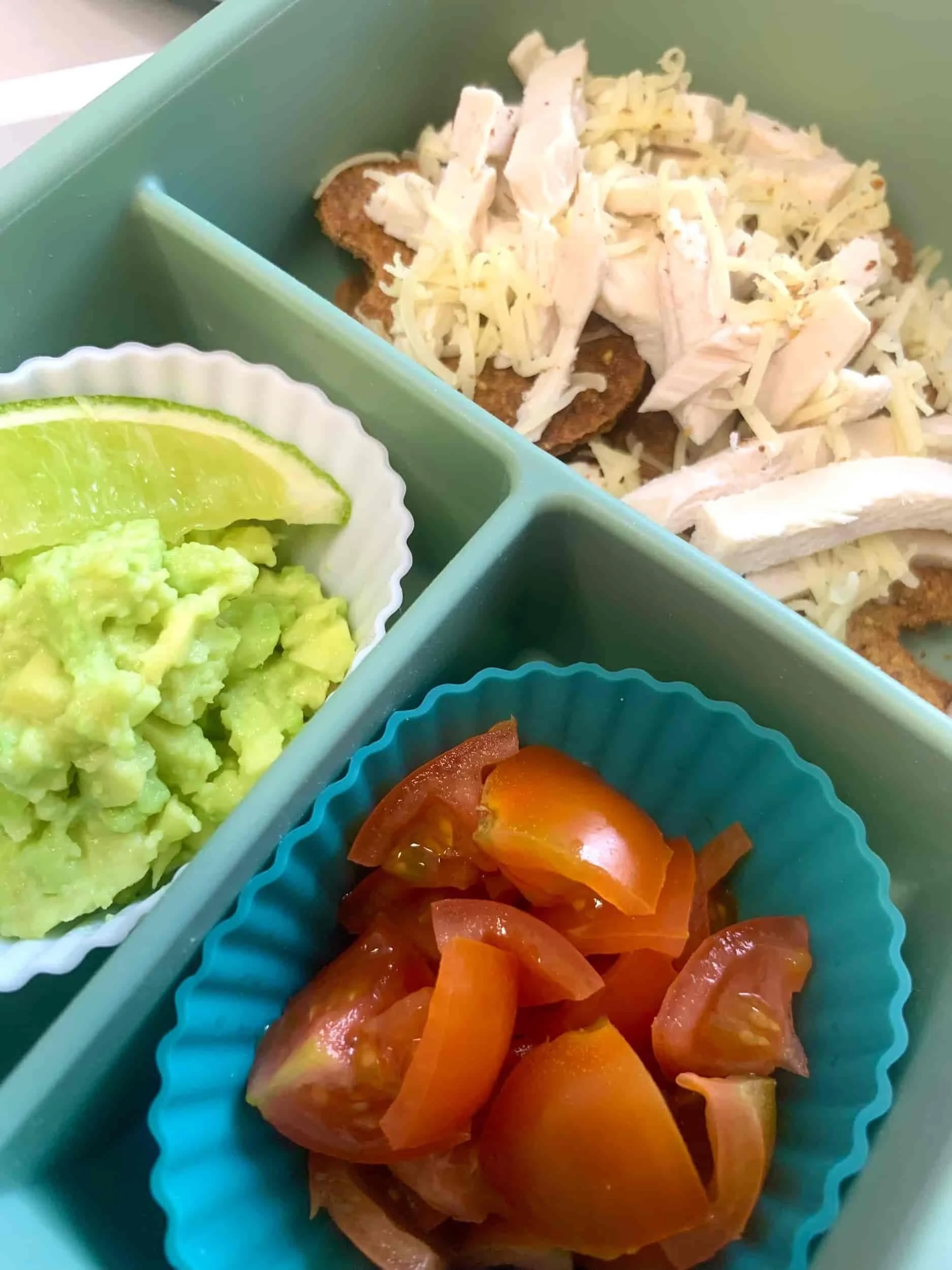






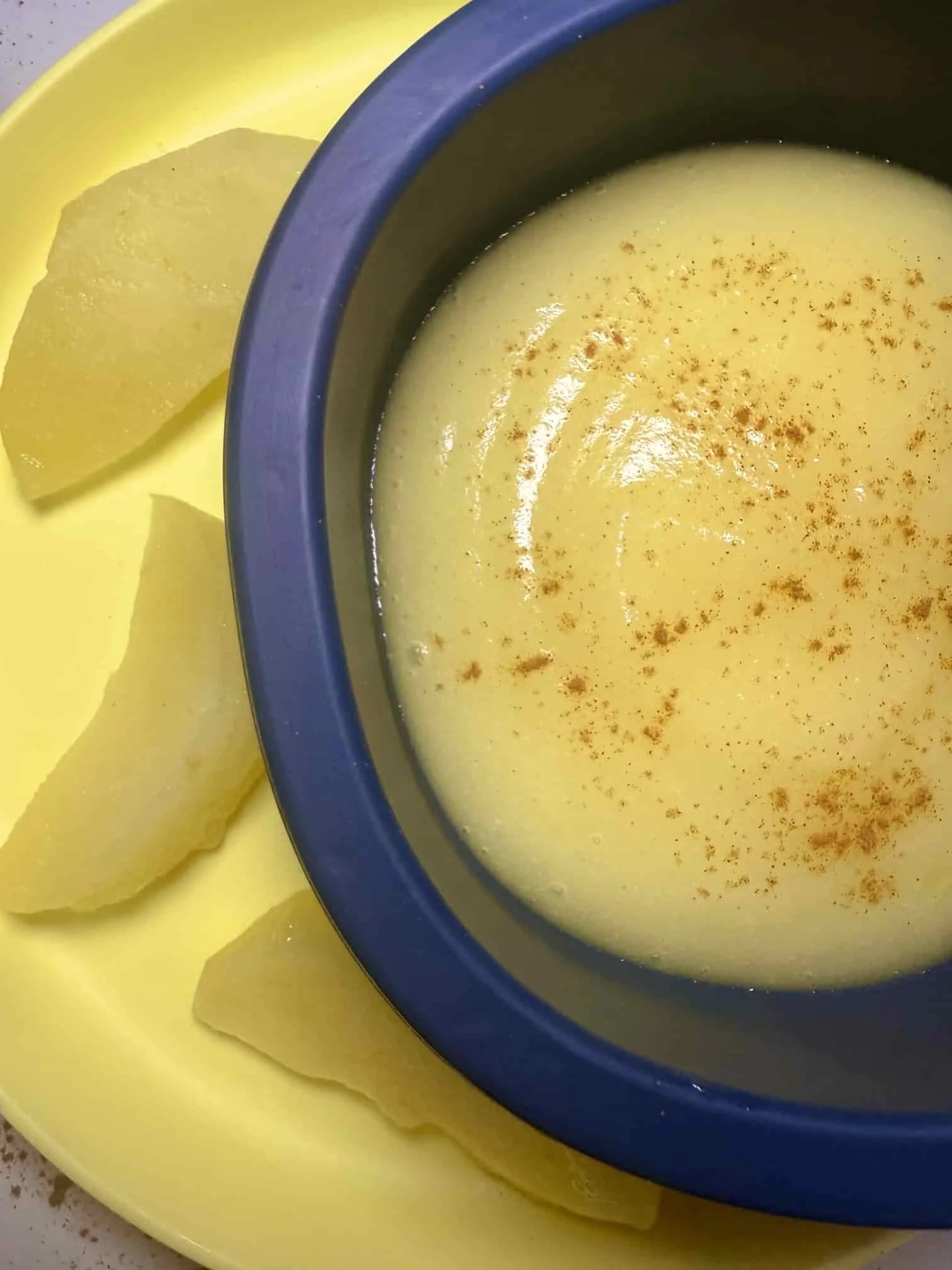
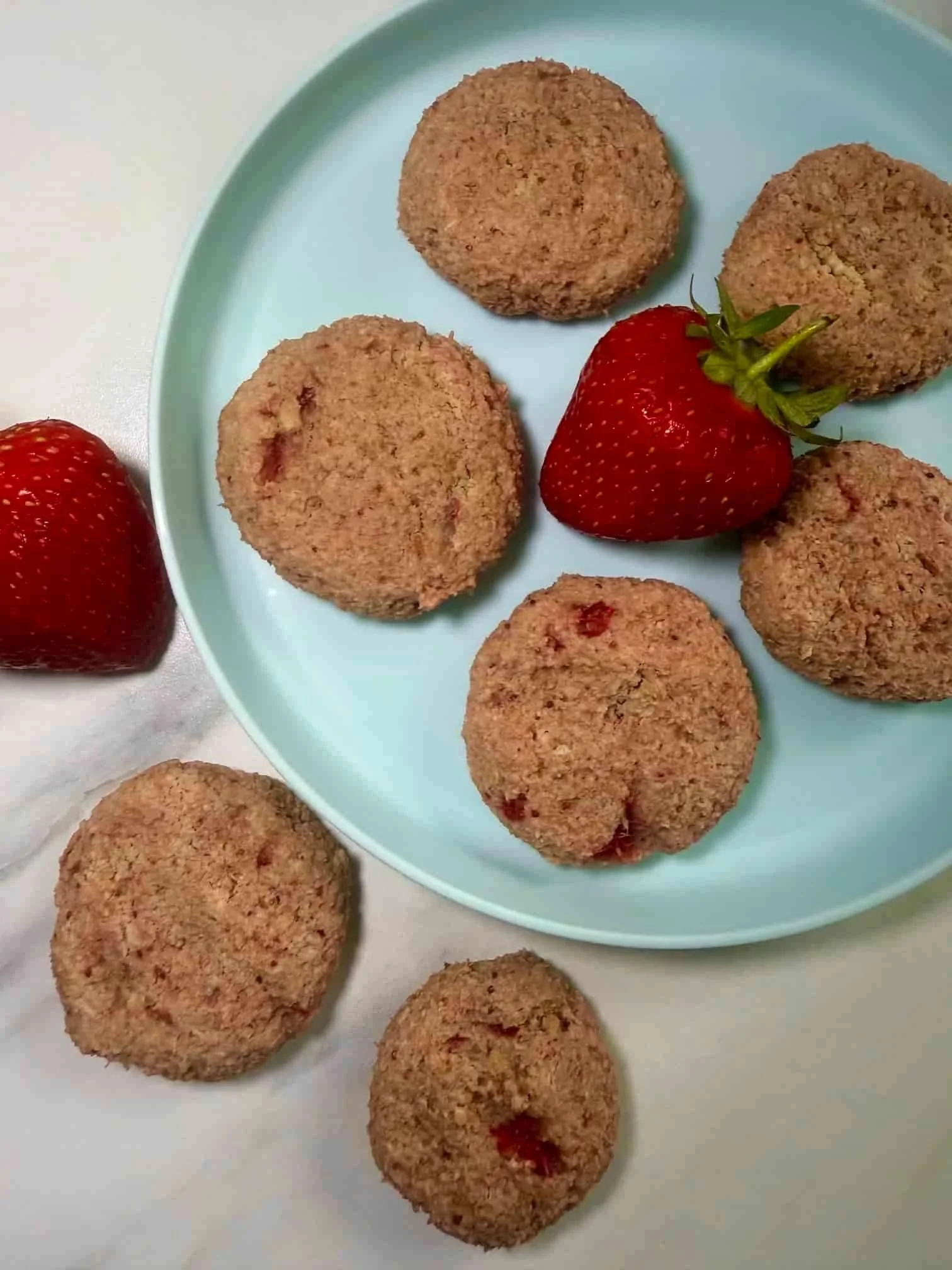
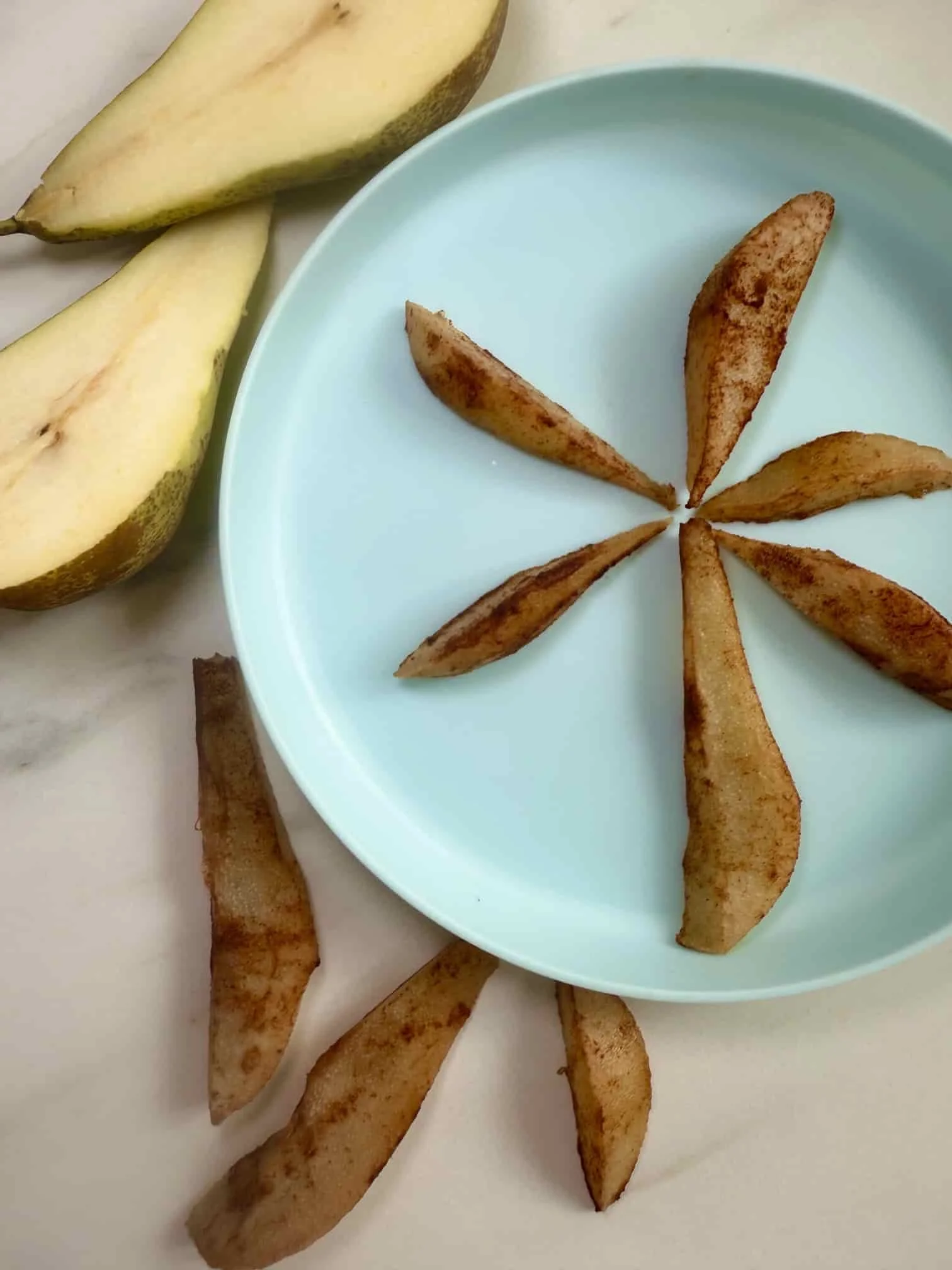
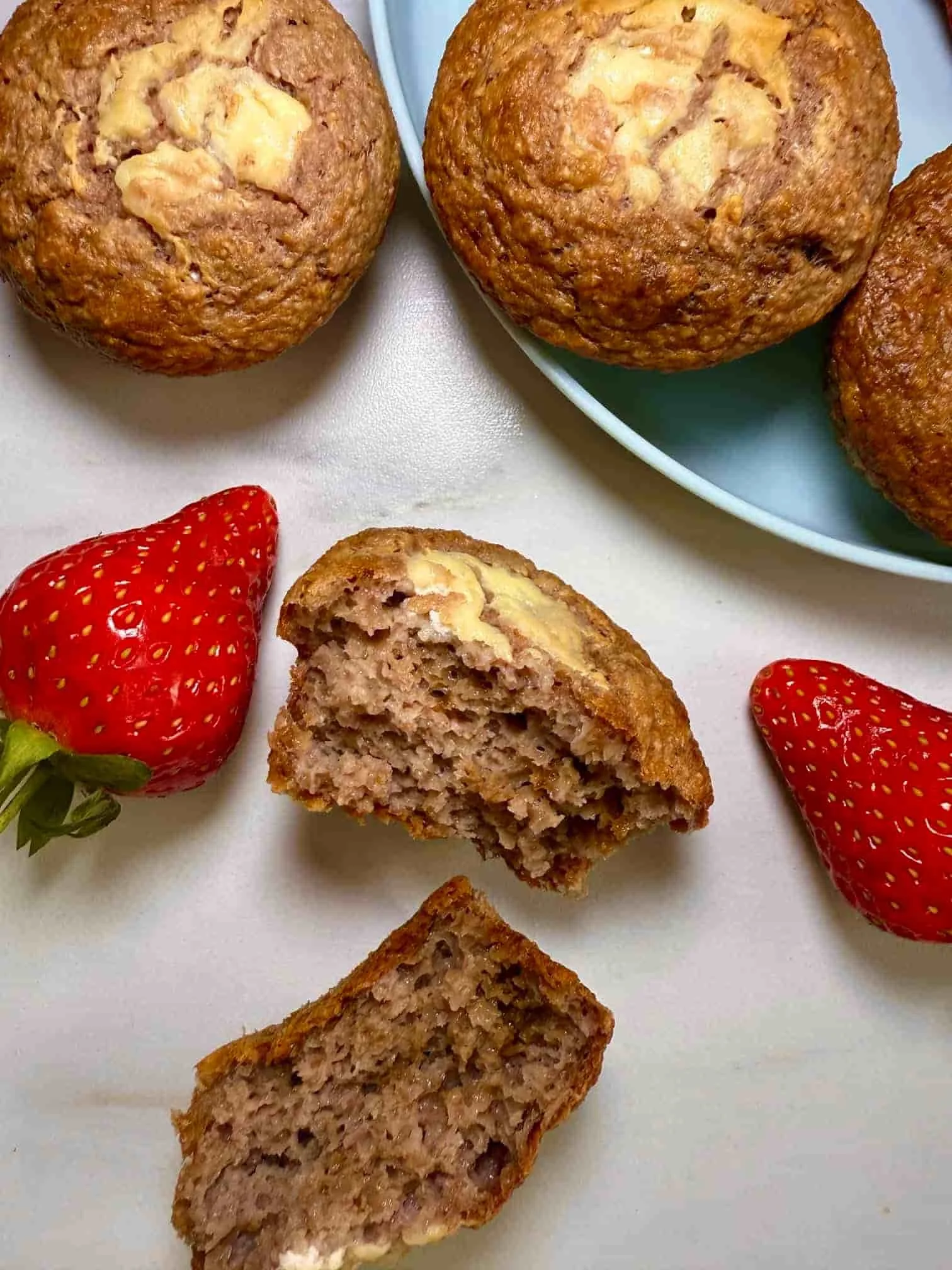


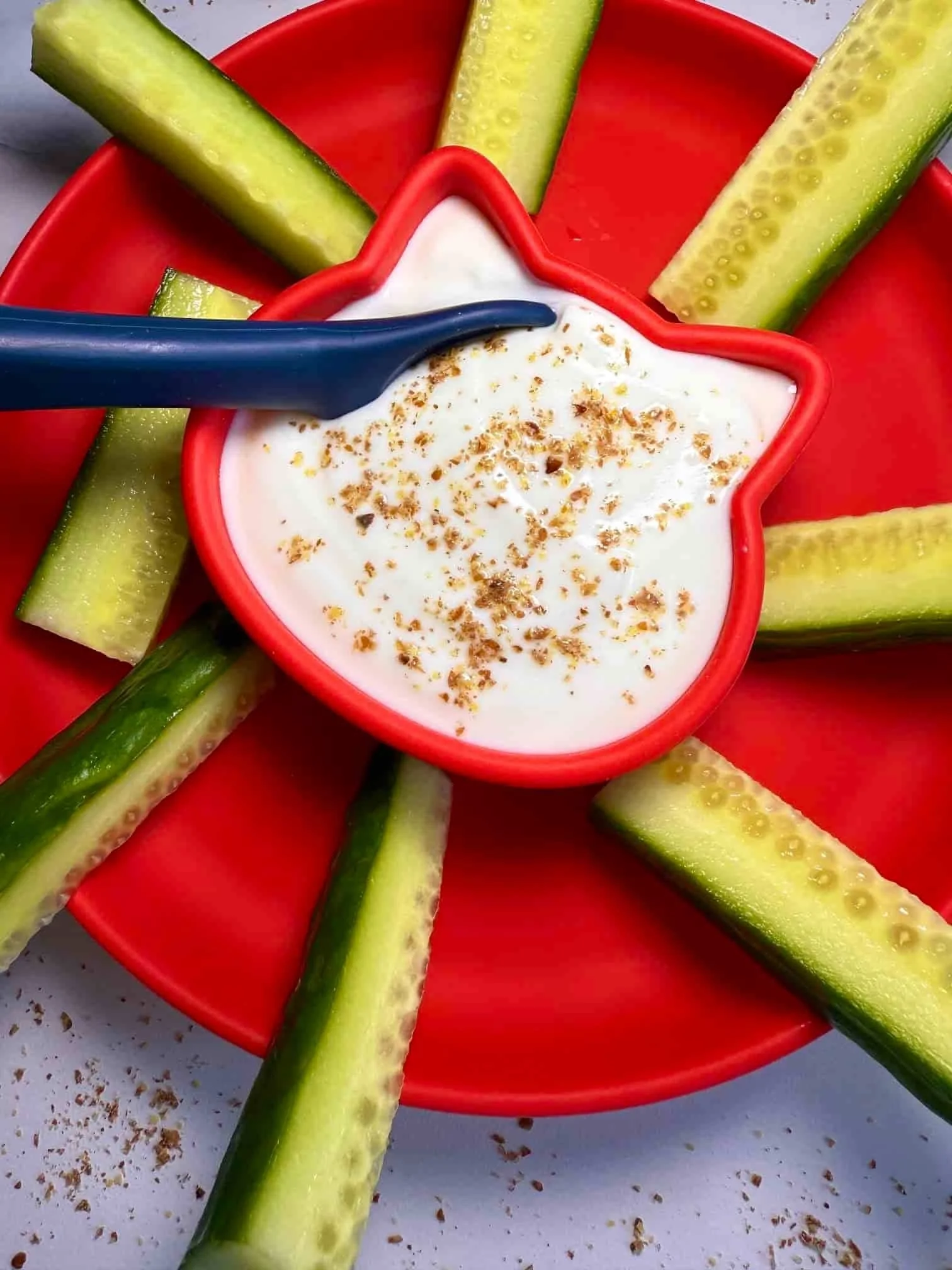





















A delicious 2 ingredient prune puree recipe for baby food and baby led weaning. A great way to introduce new flavours to your baby and their taste buds.